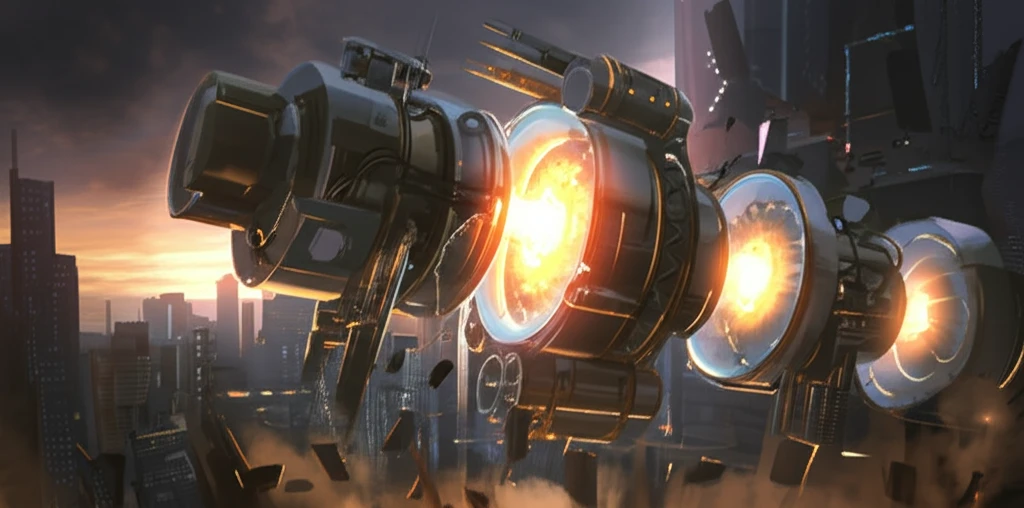
Revolutionizing Energy: Can Detonation Turbines Unlock the Future of Power?
"Explore how harnessing the kinetic energy of pulsed detonation could transform thermal engineering and redefine energy efficiency."
In an era defined by the urgent need for sustainable and efficient energy solutions, scientists and engineers are constantly pushing the boundaries of conventional technologies. Among the most promising innovations is the concept of utilizing pulsed detonation – a method that could dramatically increase the efficiency of power generation.
Traditional power plants, which rely on deflagrative combustion (a slower burning process), have reached a point of diminishing returns in terms of energy efficiency. To break through this barrier, researchers are turning to detonation, a supersonic combustion process that releases energy far more rapidly and intensely.
The focus is now on harnessing not just the thermal energy released during detonation, but also the immense kinetic energy of the resulting products. This approach has led to the development of pulse detonation turbines – a novel technology designed to capture and convert this kinetic energy into usable power.
What is a Pulse Detonation Turbine and How Does it Work?

At its core, a pulse detonation turbine is designed to convert the kinetic energy from detonation products into mechanical work. Unlike traditional turbines that operate on steady combustion, these turbines harness the energy from intermittent, high-energy detonations. The simplest design resembles a water wheel, where the force of the detonation products drives the rotation.
- Detonation Initiation: A fuel-air mixture is detonated within a specialized tube.
- Kinetic Energy Conversion: The resulting high-speed gas is channeled to the turbine.
- Rotor Movement: The force of the gas impacts the turbine blades, initiating rotation.
- Energy Extraction: The mechanical energy from the rotor is converted into electricity.
The Future of Detonation Turbines: Efficiency and Beyond
While current prototypes demonstrate promising potential, the journey to widespread adoption involves significant refinements. Future research will focus on optimizing turbine design to minimize energy losses, enhance kinetic energy capture, and integrate these turbines into combined cycle systems. If these hurdles are overcome, pulse detonation turbines could represent a significant leap towards more efficient and sustainable energy production.
